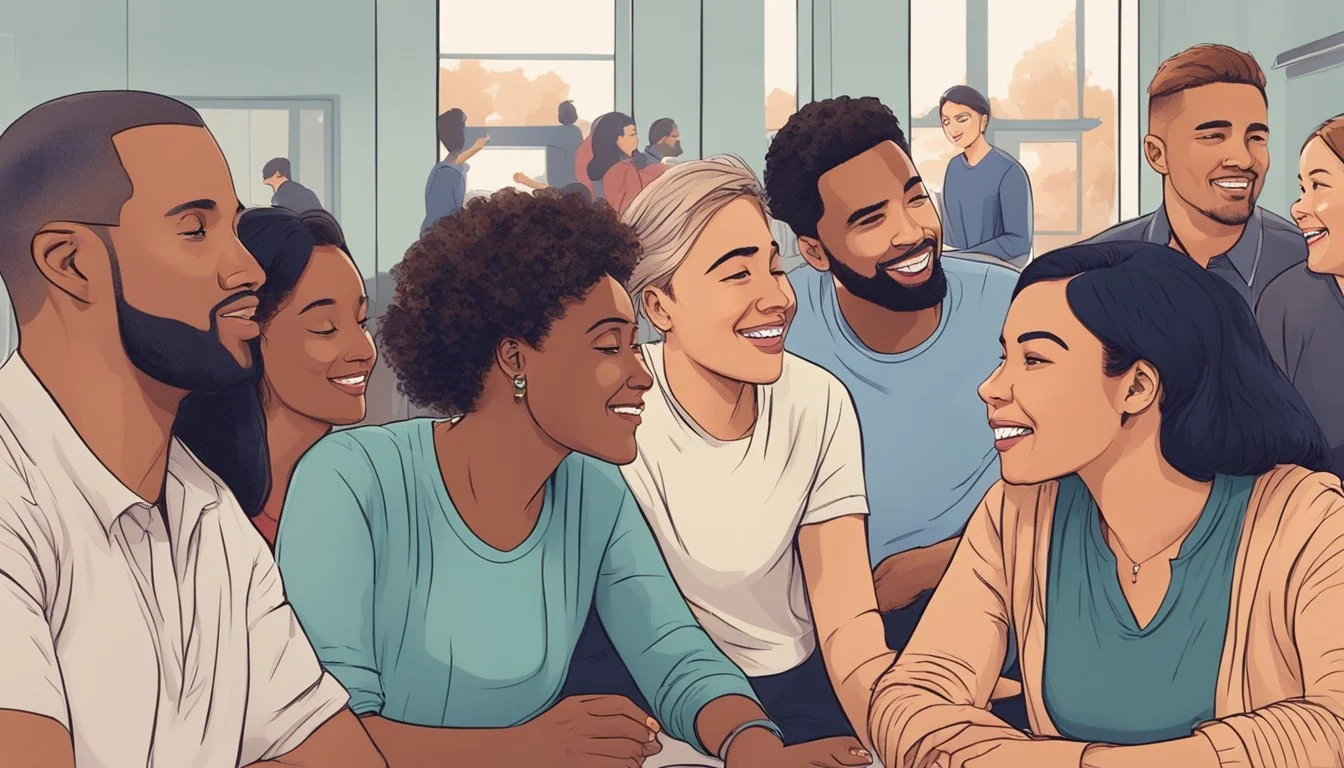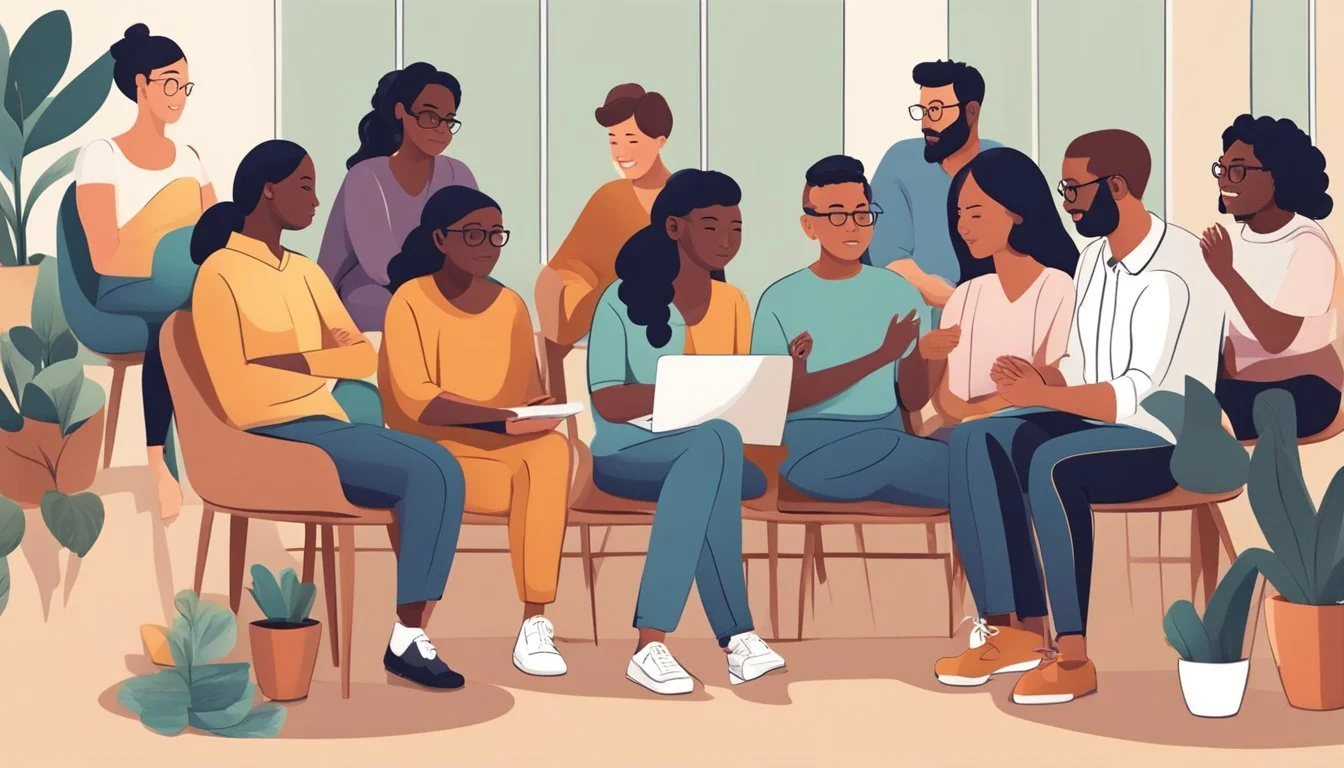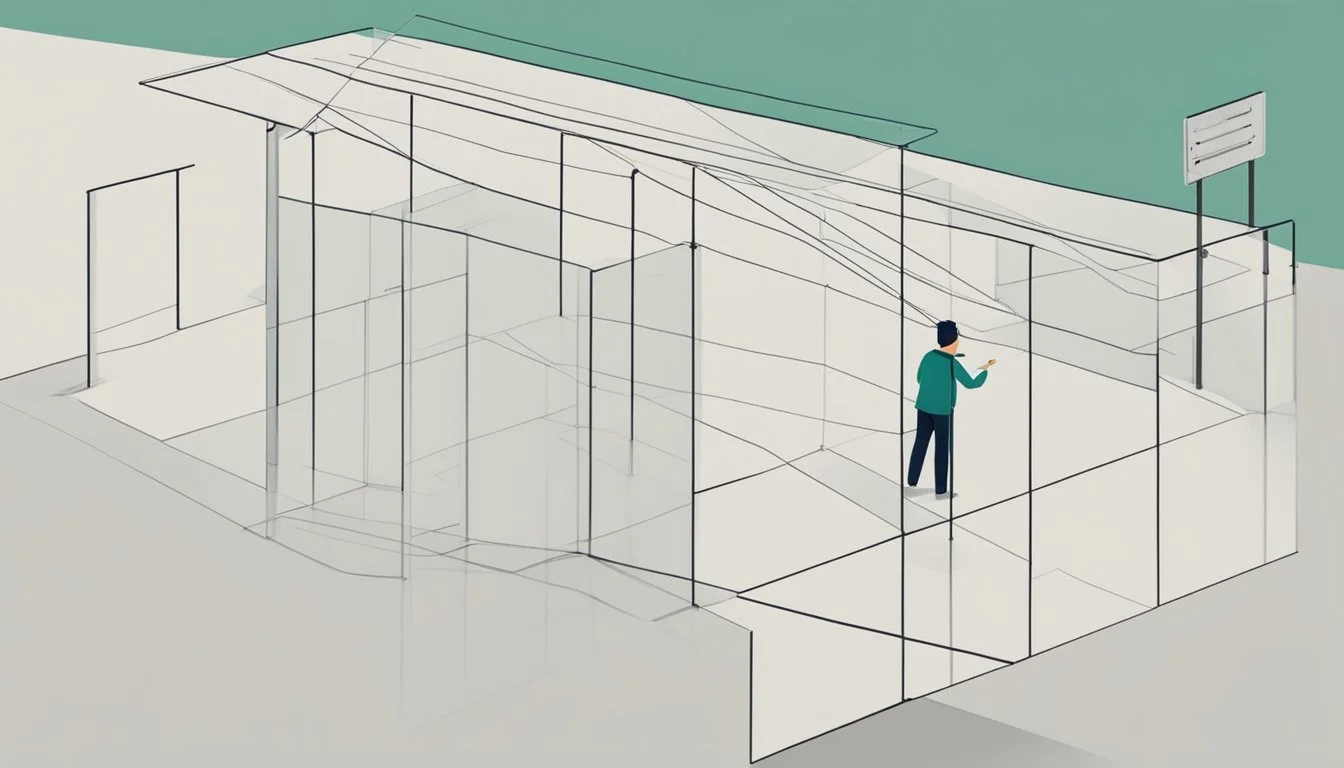11 Ways to Improve Communication Skills When You Have BPD
Enhancing Interpersonal Relationships
Effective communication is a vital skill for individuals with Borderline Personality Disorder (BPD). It plays a crucial role in managing relationships, expressing emotions, and navigating daily interactions. People with BPD often face unique challenges in communication due to intense emotions and fear of abandonment.
Improving communication skills can significantly enhance the quality of life for those with BPD. By learning and implementing specific strategies, individuals can better express their needs, understand others, and build stronger, more stable relationships. This article explores practical ways to develop and refine communication abilities for people living with BPD.
1) Practice Active Listening
Active listening is a crucial skill for individuals with Borderline Personality Disorder (BPD) to improve their communication. This technique involves fully focusing on the speaker and understanding their message without interruption or judgment.
To practice active listening, maintain eye contact and give your full attention to the person speaking. Avoid distractions like phones or other environmental stimuli that may detract from the conversation.
Use nonverbal cues to show engagement, such as nodding or leaning slightly forward. These gestures demonstrate that you are present and attentive to the speaker's words.
Reflect on what the speaker has said by paraphrasing their main points. This helps ensure you have understood their message correctly and allows for clarification if needed.
Ask open-ended questions to encourage the speaker to elaborate on their thoughts and feelings. This promotes a deeper understanding and shows genuine interest in their perspective.
Resist the urge to interrupt or offer immediate solutions. Allow the speaker to finish their thoughts before responding. This practice helps build trust and fosters more meaningful conversations.
By consistently employing these active listening techniques, individuals with BPD can enhance their communication skills and improve their relationships with others.
2) Use 'I' Statements
'I' statements are a powerful communication tool for individuals with Borderline Personality Disorder (BPD). These statements focus on expressing personal feelings and experiences without blaming others.
When using 'I' statements, a person describes their emotions, thoughts, and needs clearly. For example, instead of saying "You always ignore me," one might say "I feel hurt when I don't receive a response."
This approach helps reduce defensiveness in conversations and promotes understanding between parties. It allows individuals with BPD to express themselves assertively without escalating conflicts.
'I' statements typically follow a structure: "I feel [emotion] when [situation] because [reason]." This format encourages self-reflection and responsibility for one's own emotions.
Practicing 'I' statements can lead to improved relationships and more productive discussions. It helps individuals with BPD communicate their needs effectively while respecting others' perspectives.
By consistently using 'I' statements, people with BPD can develop healthier communication patterns and foster more positive interactions in their personal and professional lives.
3) Practice Mindfulness
Mindfulness is a powerful tool for individuals with Borderline Personality Disorder (BPD) to improve their communication skills. It involves focusing on the present moment without judgment, which can help manage intense emotions and impulsive reactions.
One effective mindfulness technique is deep breathing. Taking slow, deliberate breaths can calm the nervous system and reduce anxiety during conversations. This allows for clearer thinking and more thoughtful responses.
Meditation is another valuable practice. Regular meditation sessions can increase self-awareness and emotional regulation. These skills are crucial for maintaining composure in challenging social situations.
Observing thoughts without engaging them is a key mindfulness skill. By noticing judgments, anxieties, and other mental patterns as they arise, individuals with BPD can choose their responses more carefully.
Grounding exercises can help maintain focus during interactions. Paying attention to physical sensations or surroundings can prevent emotional overwhelm and promote more effective communication.
Incorporating mindfulness into daily routines can lead to long-term improvements in communication. Even brief moments of mindful awareness throughout the day can contribute to more stable and satisfying relationships.
4) Engage in Dialectical Behavior Therapy (DBT)
Dialectical Behavior Therapy (DBT) offers valuable tools for improving communication skills in individuals with Borderline Personality Disorder (BPD). This therapy focuses on developing mindfulness, distress tolerance, emotion regulation, and interpersonal effectiveness.
DBT teaches specific communication techniques like the GIVE skill, which emphasizes gentleness, interest, validation, and an easy manner when interacting with others. These strategies help maintain positive relationships while expressing needs and boundaries effectively.
Another useful DBT tool is the DEAR MAN technique. This approach helps individuals describe situations objectively, express feelings, assert needs, reinforce desired outcomes, stay mindful, appear confident, and negotiate effectively.
DBT worksheets and exercises provide practical ways to practice and reinforce these communication skills. Regular engagement with these resources can lead to significant improvements in interpersonal interactions.
By participating in DBT, individuals with BPD can learn to balance their priorities, manage demands, and build a sense of mastery in their communication abilities. This therapy equips them with strategies to navigate social situations more successfully.
5) Join a Support Group
Support groups offer valuable opportunities for individuals with BPD to connect with others facing similar challenges. These groups provide a safe space to share experiences, learn coping strategies, and gain insights from peers.
Many support groups are led by trained facilitators who guide discussions and ensure a supportive atmosphere. Participants can practice communication skills in a non-judgmental environment, helping to build confidence.
Regular attendance at support groups can foster a sense of community and reduce feelings of isolation often experienced by those with BPD. Members can learn from others' successes and setbacks, gaining practical advice for managing symptoms.
Support groups also offer a chance to observe and practice healthy communication styles. Participants can develop active listening skills and learn to express themselves more effectively.
Some groups focus specifically on improving interpersonal relationships, which can be particularly beneficial for those with BPD. These groups may include role-playing exercises or group discussions on communication techniques.
Online support groups are available for those unable to attend in-person meetings. These virtual communities can provide similar benefits and allow for flexible participation.
6) Read 'The Dialectical Behavior Therapy Skills Workbook'
'The Dialectical Behavior Therapy Skills Workbook' is a valuable resource for individuals with Borderline Personality Disorder (BPD) seeking to improve their communication skills. This book provides practical exercises and techniques based on Dialectical Behavior Therapy (DBT).
The workbook covers essential DBT skills, including mindfulness, distress tolerance, and emotional regulation. These skills can help individuals with BPD manage their emotions and communicate more effectively in various situations.
Readers can learn how to identify and express their feelings clearly, listen actively, and respond to others in a balanced manner. The book offers step-by-step guidance for practicing these skills in real-life scenarios.
By working through the exercises in this book, individuals with BPD can develop greater self-awareness and emotional control. This can lead to more productive conversations and healthier relationships with others.
The workbook's second edition includes updated content and additional exercises, making it an even more comprehensive tool for improving communication skills. It is designed to be accessible and can be used independently or as a supplement to formal therapy.
7) Seek Feedback from Trusted Friends
Individuals with Borderline Personality Disorder (BPD) can benefit greatly from seeking feedback on their communication skills. Trusted friends can provide valuable insights and perspectives that may not be apparent to the person with BPD.
It's important to choose friends who are supportive and understanding of BPD challenges. These individuals should be able to offer constructive criticism in a kind and compassionate manner.
When asking for feedback, be specific about areas of communication you want to improve. This might include tone of voice, body language, or clarity of expression.
Prepare to listen without becoming defensive. Remember that feedback is meant to help, not hurt. Take time to process the information before responding or making changes.
Consider asking friends to point out both strengths and areas for improvement in your communication. This balanced approach can help build confidence while identifying opportunities for growth.
Implement the feedback gradually and check in with friends periodically to gauge progress. Celebrating small improvements can be motivating and encourage continued effort in enhancing communication skills.
8) Practice Empathy and Understanding
Developing empathy is crucial for individuals with BPD to enhance their communication skills. By putting themselves in others' shoes, they can gain a deeper understanding of different perspectives and emotions.
Active listening plays a vital role in practicing empathy. This involves fully focusing on the speaker, reflecting back their words, and acknowledging their feelings without interruption or judgment.
Individuals with BPD can benefit from empathy training programs that utilize techniques such as role-playing, lectures, and skills practice. These exercises can help improve their ability to connect with others on an emotional level.
When communicating with someone, it's important to validate their feelings and experiences. This doesn't mean agreeing with everything they say, but rather acknowledging that their emotions are real and valid.
Exploring others' interests and checking in regularly can also foster empathy and understanding. By showing genuine curiosity about others' lives and experiences, individuals with BPD can build stronger connections and improve their communication skills.
9) Establish Clear Boundaries
Setting clear boundaries is crucial for individuals with Borderline Personality Disorder (BPD) to improve their communication skills. Boundaries help define acceptable behaviors and protect personal space, both physically and emotionally.
People with BPD should communicate their limits clearly and directly to others. This includes expressing what they are comfortable with and what behaviors they find unacceptable.
Consistency is key when maintaining boundaries. Once established, it's important to uphold them consistently to avoid confusion and prevent others from pushing limits.
It's also essential for individuals with BPD to respect the boundaries of others. This mutual respect fosters healthier relationships and more effective communication.
When someone crosses a boundary, those with BPD should address it calmly and assertively. They can restate their boundary and explain why it's important to them.
Learning to say "no" is an important aspect of boundary-setting. It helps prevent overcommitment and reduces stress in relationships.
Seeking support from a therapist or counselor can be beneficial in learning how to establish and maintain healthy boundaries. They can provide strategies tailored to individual needs and challenges.
10) Learn to Manage Emotional Triggers
People with Borderline Personality Disorder (BPD) often experience intense emotional reactions to certain triggers. Identifying these triggers is the first step in managing them effectively.
Common triggers for individuals with BPD include perceived rejection, abandonment fears, and criticism. Recognizing these patterns can help in developing strategies to cope with them.
One helpful technique is mindfulness. By practicing mindfulness, people can learn to observe their emotions without immediately reacting to them. This creates space for more thoughtful responses.
Developing a crisis plan can also be beneficial. This plan outlines specific steps to take when feeling overwhelmed by triggers. It may include contacting a support person or engaging in calming activities.
Cognitive-behavioral techniques can assist in reframing negative thoughts associated with triggers. By challenging distorted thinking patterns, individuals can reduce the intensity of their emotional reactions.
Regular self-care practices, such as exercise and adequate sleep, can help build resilience against triggers. These activities contribute to overall emotional stability and well-being.
11) Use Relaxation Techniques
Relaxation techniques can be invaluable for individuals with Borderline Personality Disorder (BPD) to manage intense emotions and improve communication. Deep breathing exercises are a simple yet effective method to reduce stress and promote calmness.
Progressive muscle relaxation involves tensing and releasing different muscle groups, helping to release physical tension and promote mental relaxation. This technique can be particularly useful before challenging conversations.
Mindfulness meditation encourages focusing on the present moment, which can help individuals with BPD become more aware of their thoughts and emotions. This increased self-awareness can lead to better emotional regulation during interactions.
Guided imagery involves visualizing peaceful scenes or scenarios, providing a mental escape from stressful situations. This technique can be used to prepare for difficult conversations or to calm down after intense emotional experiences.
Incorporating these relaxation techniques into daily routines can help individuals with BPD develop better emotional control and enhance their ability to communicate effectively with others.
Understanding Communication Challenges with BPD
Borderline Personality Disorder (BPD) profoundly affects interpersonal interactions. Individuals with BPD often struggle with emotional regulation and perception, leading to unique communication hurdles.
The Impact of BPD on Communication
BPD can create intense emotional responses that complicate conversations. People with BPD may experience rapid mood shifts, making it difficult for others to follow their train of thought. They might interpret neutral comments as personal attacks or criticism.
Fears of abandonment can lead to clingy behavior or pushing others away. This pattern often confuses communication partners. BPD can also cause black-and-white thinking, where situations and people are seen as all good or all bad, with no middle ground.
Impulsivity associated with BPD may result in interrupting others or saying hurtful things without considering the consequences. These behaviors can strain relationships and make effective communication challenging.
Recognizing Common Triggers
Certain situations frequently trigger emotional responses in individuals with BPD. These triggers can disrupt communication and lead to misunderstandings or conflicts.
Common triggers include:
Perceived rejection or abandonment
Criticism, even if constructive
Feeling ignored or misunderstood
Changes in plans or routines
Reminders of past trauma
Recognizing these triggers can help both individuals with BPD and their communication partners navigate conversations more effectively. It's important to approach triggering topics with sensitivity and awareness.
Being mindful of nonverbal cues and tone of voice can also prevent unintentional triggering. Creating a safe, non-judgmental environment for communication can reduce the frequency and intensity of trigger responses.
Building Effective Communication Strategies
Improving communication skills with BPD requires developing self-awareness and practicing mindfulness techniques. These strategies can help individuals manage emotions and interact more effectively with others.
Developing Self-Awareness
Self-awareness is crucial for people with BPD to recognize their emotional triggers and patterns. Keeping a journal can help track thoughts and feelings throughout the day. This practice allows individuals to identify recurring themes and situations that lead to emotional reactions.
Regular self-reflection is another valuable tool. Taking time each day to pause and examine one's mental state can provide insights into emotional fluctuations. This awareness can help anticipate potential communication challenges.
Seeking feedback from trusted friends or family members can offer external perspectives on communication styles. This input can highlight both strengths and areas for improvement in interpersonal interactions.
Practicing Mindfulness Techniques
Mindfulness techniques can significantly enhance communication skills for those with BPD. Deep breathing exercises help regulate emotions during conversations. Taking slow, deliberate breaths can calm the nervous system and reduce impulsive responses.
Grounding techniques, such as focusing on physical sensations, can anchor individuals in the present moment. This practice prevents getting lost in emotional reactions during interactions.
Meditation can improve overall emotional regulation. Regular practice enhances the ability to observe thoughts and feelings without immediately reacting to them. This skill is particularly useful in maintaining composure during challenging conversations.
Active listening exercises, like fully focusing on the speaker without planning responses, can improve understanding and empathy in communication.








